Get PeakVisor App
Sign In
Search by GPS coordinates
- Latitude
- ° ' ''
- Longitude
- ° ' ''
- Units of Length

Yes
Cancel
Share ×

Scan the QR code and open PeakVisor on your phone
❤ Wishlist ×
Choose
Delete
Known for its spectacular scenery, fantastic hiking trails, and amazing hunting and fishing opportunities, Réserve faunique des Laurentides is one of the premier outdoor recreation destinations near Quebec City. The reserve is situated in the south-central part of the Canadian province of Quebec. It contains more than 2,000 lakes as well as 30 named peaks, the highest and most prominent of which is Mont Belle Fontaine (1,147 m/3,763 ft).
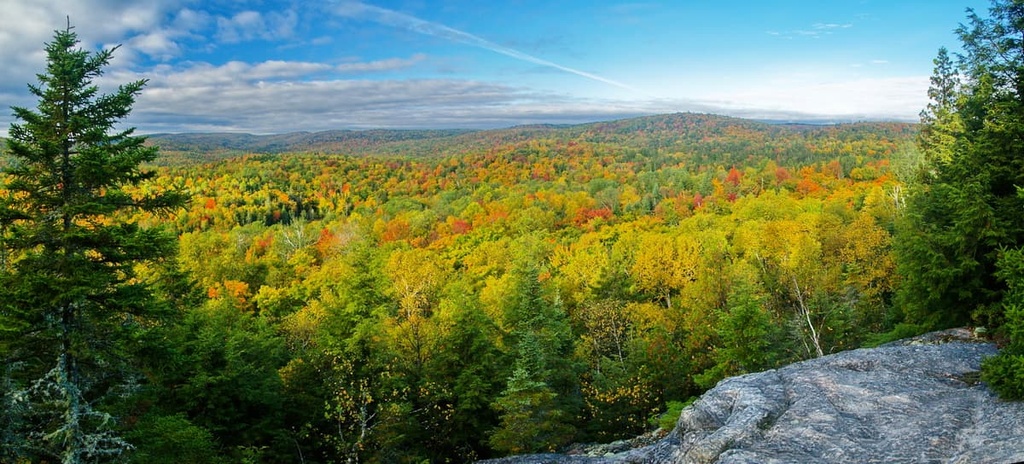
Réserve faunique des Laurentides (Laurentides Wildlife Reserve) is located in the south-central part of the province of Quebec in Canada. It is situated just a short drive to the northwest of Quebec City in the Capital-Nationale, Mauricie, and Saguenay–Lac Saint-Jean regions.
The reserve encompasses a territory of some 7,861 square km (3,035 sq. mi), making it one of the largest protected areas in Quebec that’s managed by Sépaq (Société des établissements de plein air du Québec/Quebec Outdoor Establishments Company).
Much of the reserve is dominated by the peaks of the Laurentian Mountains, which cover a large swath of Quebec and southern Labrador along the north shores of the Saint Lawrence River. In particular, the reserve contains a sizable part of the Jacques-Cartier Massif, which includes Mont Belle Fontaine, as well as a handful of Quebec’s 1,000-meter peaks.
The wildlife reserve is situated in a rugged part of south-central Quebec with little human development. It is surrounded by other protected areas, including Parc national des Grands-Jardins and Parc national de la Jacques-Cartier.
It is also surrounded by ZEC Kiskissink, ZEC de la Rivière-Blanche, ZEC Batiscan-Neilson, ZEC des Martres, and ZEC Mars-Moulin. Additionally, Réserve faunique des Laurentides encompasses Réserve écologique Thomas-Fortin and Réserve écologique Victor-A.-Huard.
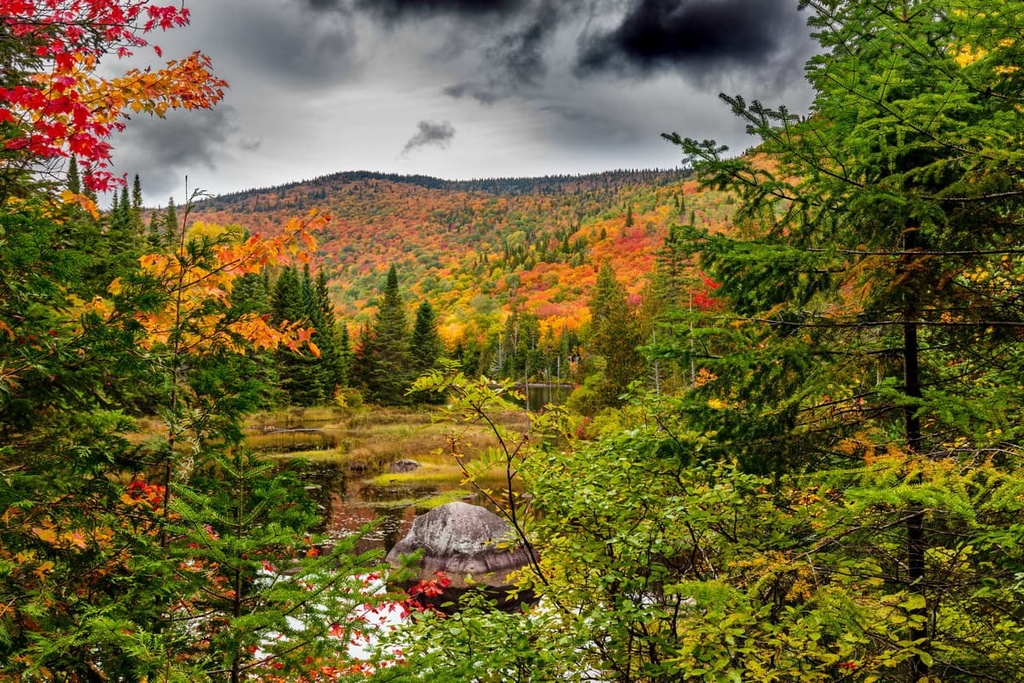
The peaks in Réserve faunique des Laurentides are part of the Laurentian Mountains, a major chain of peaks that runs along much of the northern shores of the Saint Lawrence River.
Interestingly, the Laurentian Mountains are among the oldest remaining mountain ranges on the planet. The range itself formed during the Grenville orogeny, which was one of the major mountain building events of the Mesoproterozoic. This orogeny was responsible for creating mountains throughout what is now the easter parts of the US and Canada as well as the southern US and southeastern Mexico.
That said, the rocks underlying the Laurentian Mountains are substantially older than the Grenville orogeny. These rocks formed approximately 540 million years ago, making them Precambrian in age.
Like much of the rest of eastern and northern Canada, the rocks in Réserve faunique des Laurentides are part of the Canadian Shield. The Canadian Shield is a massive area of exposed Precambrian rock, most of which is highly metamorphosed or igneous in origin.
During the last glacial maximum, the region was extensively glaciated. This glaciation helped to carve out many of the landforms that we see in the reserve today, including its valleys, lakes, and rounded mountaintops.
Major peaks in the reserve include Mont Belle Fontaine, Mont de la Québécoise, Mont Jean-Hubert, Sommet de Chaillot,, Sommet de Moncton, and Mont des Conscrits.
As it’s a nature reserve, Réserve faunique des Laurentides is one of the most biodiverse places in the Capitale-Nationale region of Quebec.
The vast majority of the reserve is dominated by boreal forests. These forests are home to a variety of trees, such as balsam fir, yellow birch, black spruce, and white birch. The highest elevations in the reserve are also home to alpine ecosystems that feature a variety of mosses such as reindeer moss (Cladonia).
As far as wildlife goes, the reserve is home to hundreds of incredible species. Major mammals found in the park include caribou, Canada lynx, black bears, moose, North American beavers, mountain lions, American martens, porcupines, and occasionally gray wolves.
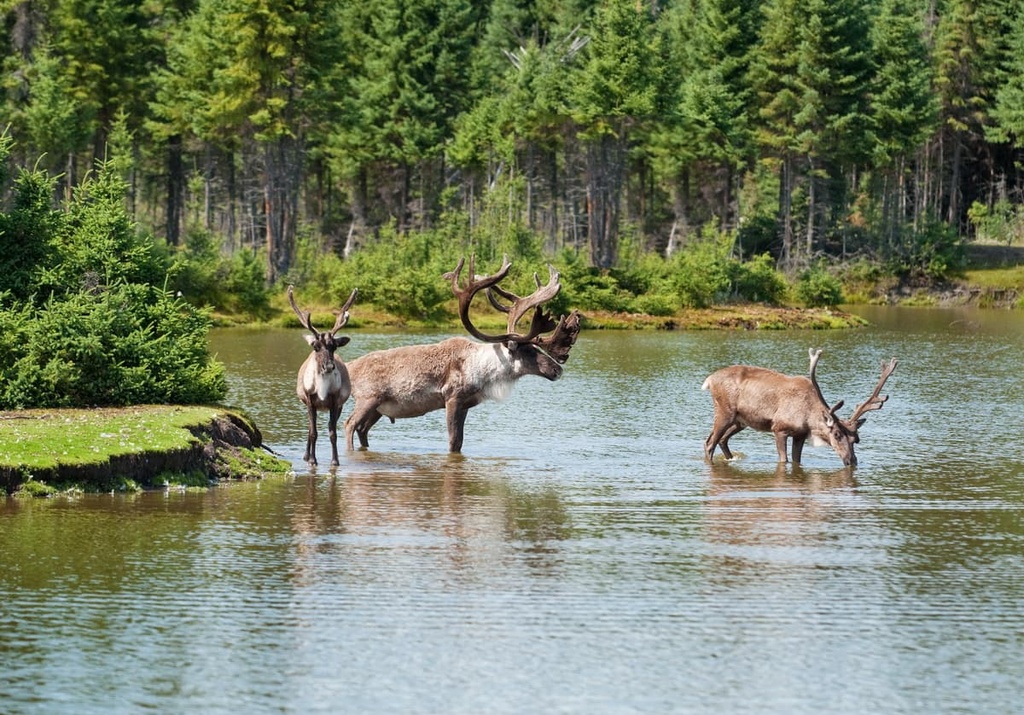
The reserve is also home to a diversity of bird species such as spruce grouse, herons, ruffed grouse, common loons, and Canadian jays. The waterways in the park are also home to brook trout, lake trout, Arctic char, and ouananiche (a form of landlocked Atlantic salmon).
The land that is now part of Réserve faunique des Laurentides is part of the ancestral homelands and traditional territories of many Indigenous peoples, including the Huron-Wendat Nation (Nation Huronne-Wendat) and the Innu of Mashteuiatsh.

Some of the first peoples of European descent to venture into what is now the reserve were French Jesuit missionaries who traveled along the Jesuit Trail (Sentier des Jésuites) in the 1600s. The Jesuit Trail was a footpath that connected Quebec City with Lac Saint-Jean.
The region that later became the reserve stayed relatively undisturbed by colonists throughout the eighteenth, nineteenth, and twentieth centuries with the exception of the development of Route 175, which cuts through the reserve’s current territory.
Réserve faunique des Laurentides was first created in 1895 as a forest reserve called Parc des Laurentides. In 1981, the park was split up and two large parcels of it eventually became Parc national de la Jacques-Cartier and Parc national des Grands-Jardins. The rest of the original park became the wildlife reserve that we know of today.
Réserve faunique des Laurentides is one of the most popular outdoor recreation destinations near Quebec City and for good reason—there are dozens of fantastic opportunities for adventures and activities in the reserve.
That said, the size and remoteness of the reserve means that there are relatively few maintained and designated hiking trails. Most of the trails in the reserve are located close to one of the campgrounds. Some relatively popular trails include:
But despite the relative lack of maintained trails in the reserve, there are plenty of adventures to be had in the region. The reserve contains a truly impressive web of roads (both paved and unpaved) that provide exceptional access to the region.
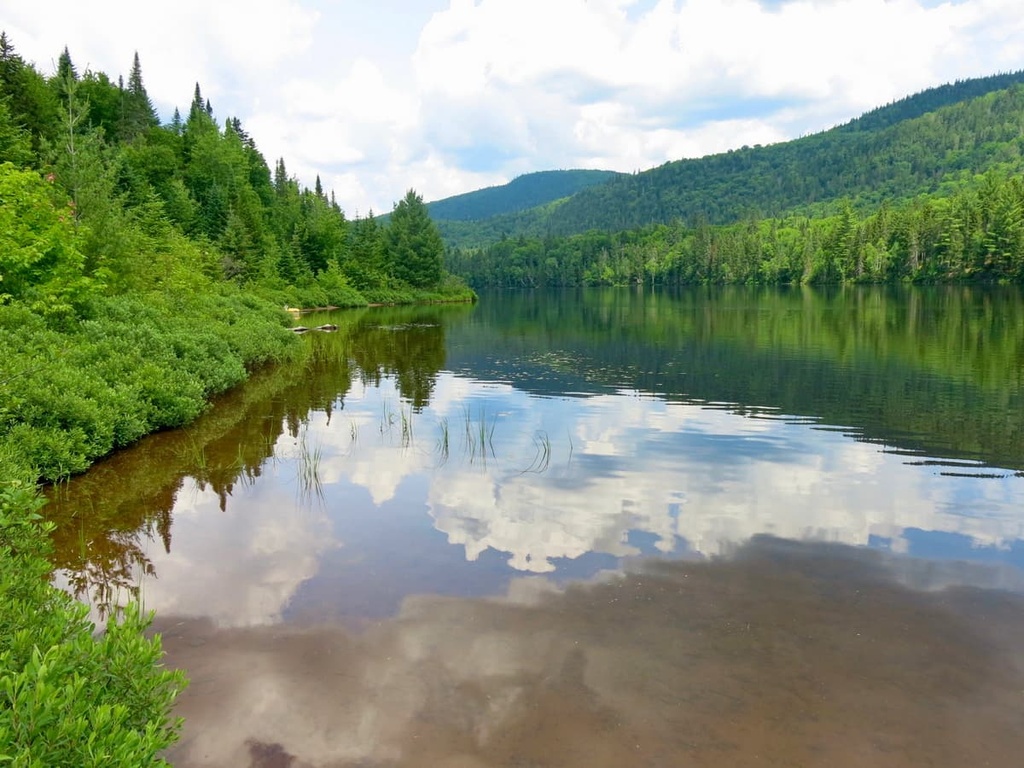
Most of the reserve’s major lakes are accessible by road. This makes fishing and paddling the activities of choice in the Laurentides Wildlife Reserve.
Paddling is generally open to anyone, but keep in mind that you need to apply for an overnight permit if you want to camp in the reserve’s backcountry.
Alternatively, any fishing that you do in the reserve generally requires a permit and a reservation. You can get permits for day fishing or for overnight fishing packages at the Sépaq website.
The only type of fishing that doesn’t require a permit in the reserve is fly fishing, which is only allowed during the summer months and at specific rivers.
The lands of Réserve faunique des Laurentides have long been popular hunting grounds. Local First Nations have hunting rights within the reserve that go beyond what’s allowed for other visitors. However, the reserve allows limited big and small game hunting for visitors with the right permits.
Small game hunting is allowed by permit only during the fall season in the reserve. You can also reserve small game or bird hunting packages with accommodations during the fall months.
Additionally, the reserve has a limited quota for both bear and moose hunting. Bear hunting is allowed by permit only during the spring and early summer. Moose hunting is also limited to a specific quota and most of the permits are awarded via a random lottery.
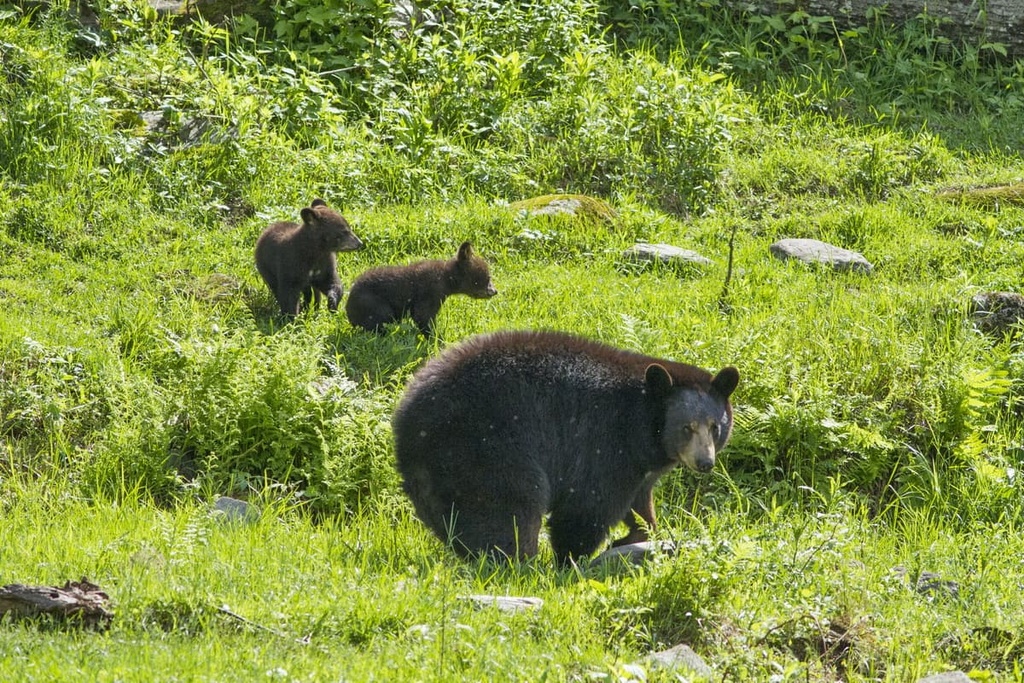
During the snowy months of the year, Réserve faunique des Laurentides turns into a veritable winter wonderland. The reserve is a fan-favorite among winter enthusiasts because it offers a superb mix of activities that the whole family can enjoy.
Most of the winter activities in the park occur near Camp Mercier. There are 33 km (21 mi) of snowshoeing trails and 70 km (43 mi) of groomed cross country ski trails at Camp Mercier. Note that day passes are required for anyone looking to snowshoe or cross country ski at the camp.
Additionally, the park offers sledding, tubing, and ice skating at the Lac-à-Noël and Devlin cabins. However, sledding, tubing, and ice skating are reserved for overnight guests of the cabins.
If you’re planning a trip to Réserve faunique des Laurentides, it’s important that you know what you’re getting into before you leave home. Here are some of the most important things to keep in mind as you plan your trip.
There is no fee to enter Réserve faunique des Laurentides. However, you need to pay a day use fee to use the groomed cross country ski trails in the reserve during the winter months. All other visitors can enter the reserve free of charge.
Réserve faunique des Laurentides is located just a short drive away from Quebec City. You can get to the park by car by taking Quebec Route 175 to reach the Camp Mercier Registration Centre and the La Loutre Registration Centre. From Route 175, you can also take Route 169 Nord to reach the Belle-Rivière Campground.
There are no formal visitors centers in Réserve faunique des Laurentides.
However, there are three registration centers—Camp Mercier, La Loutre, and Gîte-du-Berger, which are located in the south, central, and north areas of the reserve, respectively. All of the registration centers are located on Route 175 except Gîte-du-Berger, which is situated on Route 169.
Note that the operating hours for each registration center vary by season, Most of the centers are open between 7 am and 9 pm during the summer with shortened hours during the fall, winter, and spring.
Also note that there are services, including fuel and food, available at L’Étape on Lac Jacques Cartier. L’Étape is a campground and rest area on Route 175 that’s located in the middle of the reserve.
There’s no shortage of places to stay in the Réserve faunique des Laurentides. Here’s a quick look at some of the most popular accommodation and camping options in the reserve:
There are two established canoe camping routes in the reserve that offer great opportunities to venture into the backcountry of the Laurentian Mountains.
Both of these routes are best for intermediate to experienced paddlers only as they are mostly undeveloped and have few canoe trail markings. However, they both offer excellent opportunities for wildlife spotting.
If you want to canoe camp in the reserve, you need to make a reservation at the Gîte-du-Berger Registration Centre. If you’re interested in other backcountry camping opportunities, contact the reserve administration offices for more information.
Réserve faunique des Laurentides is home to two campgrounds: L’Étape in the south and Belle-Rivière in the north.
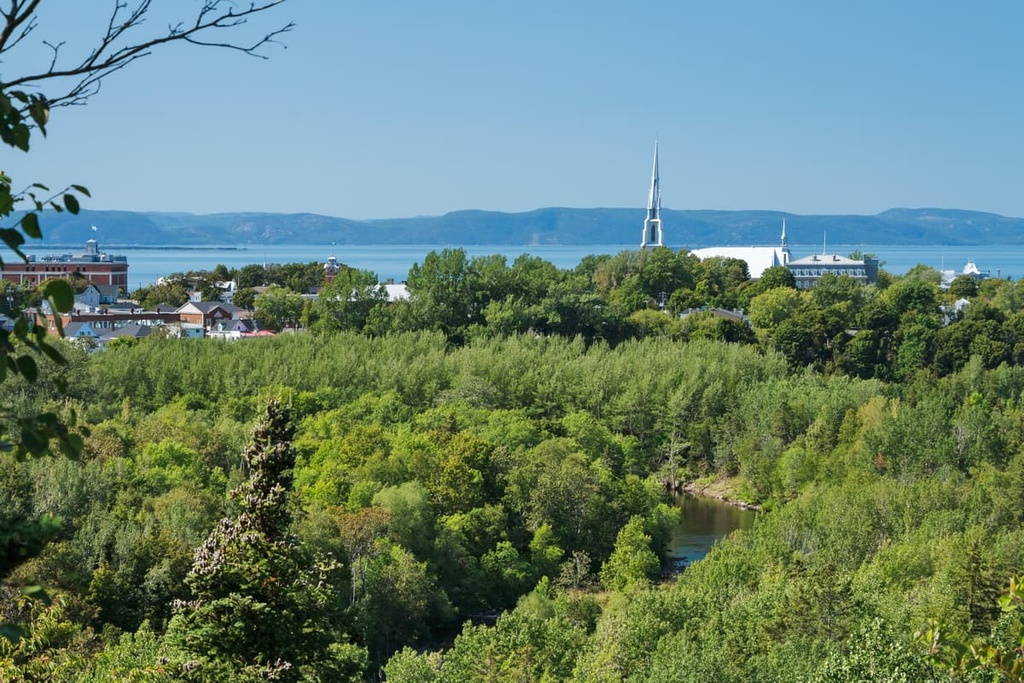
Both campgrounds provide basic amenities for guests and many of the campsites at both locations offer enough space and hook-ups for RVs. Reservations are highly recommended at both campgrounds and you can reserve your site on the Sépaq website.
The reserve currently boasts more than 100 cabins that can sleep anywhere from 2 to 16 people. Most of these cabins are located near a lake and many of these lakeside cabins also provide you with a rowboat and kayak for your adventures in the summer.
Every cabin in the reserve is slightly different, but they all feature everything you need to make basic meals. They each also come with showers and washrooms, and they’re powered with either propane gas or electricity.
During the winter months, anyone staying at a cabin in the Lac-à-Noël and Devlin sectors also gets a day pass for snowshoeing and skiing at Camp Mercier as well as access to the skating rink and toboggan hills.
Meanwhile, during the summer months, visitors who book a Fishing Package with Accomodations can also opt to sleep in one of the 10 new Modik cabins. These cabins are located in the Ailloux, Lac-à-Jack, and Belle-Rivière sectors. They can each sleep 4 people and they offer solar-powered electricity, as well as propane-powered heat and hot water.
Note that you must reserve all cabins in the wildlife reserve well in advance of your stay. You can make reservations on the Sépaq website.
For visitors who want to sleep under the stars but don’t want to deal with the hassle of setting up their campsites, the Ready-to-Camp sites are well worth considering.
Ready-to-Camps are large pre-pitched canvas tents that offer the amenities of a cabin and the excitement of tent camping. They each can accommodate up to 6 campers and they include everything you need to prepare basic meals and enjoy the great outdoors.
As is the case with cabins, it’s important to book your Ready-to-Camp site well in advance of your visit to the reserve. You can make reservations online with Sépaq.
Réserve faunique des Laurentides is home to three lodges. Each of these lodges is slightly different, but they offer comfortable accommodations with running water, electricity, and full board for groups of various sizes. These lodges include:
Note that you can only stay at these tree lodges if you book an adventure package with Sépaq. As of the time of writing, the only package you can book to access the lodges is the Service + Fishing Package.
Looking for a place to stay before or after your trip to Réserve faunique des Laurentides? Here are some of the best nearby cities and towns to check out in the region.
The capital and second largest city in the province, Quebec City is a major metropolitan area located just to the south of the reserve. Quebec City is one of the oldest European-established cities on the continent, having been founded by Samel de Champlain in 1608.
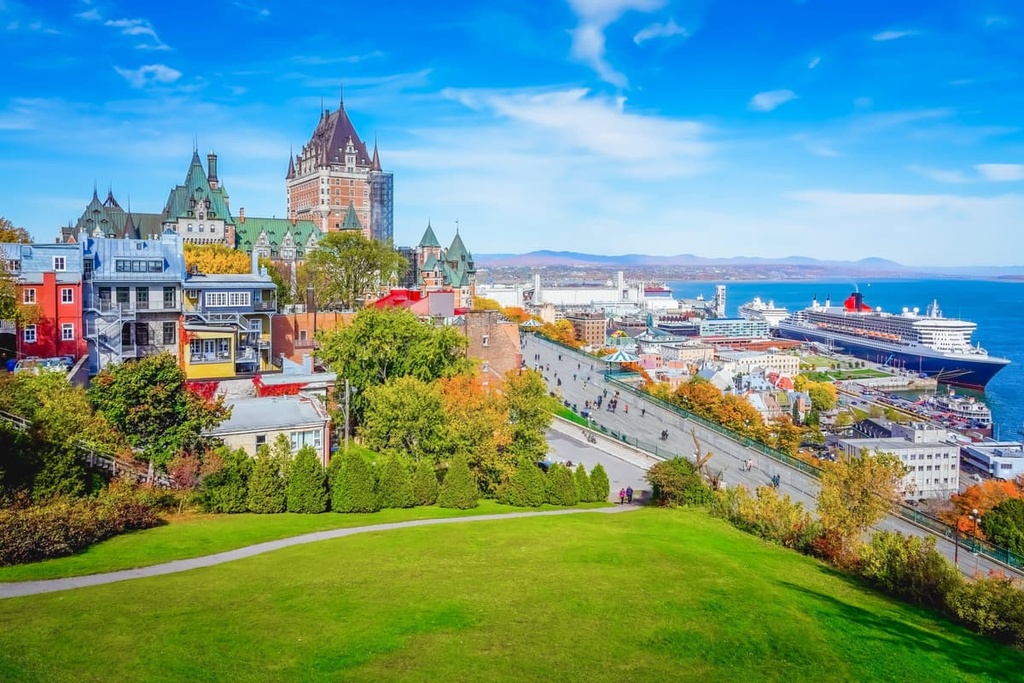
Quebec City is located on the banks of the Saint Lawrence River and it features the only remaining fortified city walls in North America to the north of Mexico. The city’s old town is a UNESCO World Heritage Site that’s well worth visiting.
Additionally, Quebec City is the largest transportation hub in the province outside of Montreal. The city has good road, rail, bus, ferry, and air connections to the rest of the province and the country.
The city of Trois-Rivières is situated just to the southwest of Quebec City along the Saint Lawrence River.
Despite the fact that Trois-Rivières is located at the confluence of only two rivers (Saint-Maurice and Saint Lawrence), the city gets its name from the fact that the mouth of the Saint-Maurice River is split into three channels before it reaches the Saint Lawrence. This gives the appearance of three rivers in the city.
Although Trois-Rivières is a bit smaller than both Quebec City and Montreal in terms of overall population, the city has no shortage of history and attractions. The city was founded in 1634 and it boasts a historic cityscape with excellent cafés, clubs, shops, restaurants, and bars.
Saguenay is a city of approximately 150,000 people located to the north of Réserve faunique des Laurentides along the Saguenay River. It is the largest city in the province to the north of Quebec City, making it a hub for culture and commerce in the region. This makes Saguenay a great place to stay if you’re looking to explore more of the general area.
Visitors to Saguenay have no shortage of outdoor activities to choose from. In addition to Réserve faunique des Laurentides, Saguenay is located within driving distance of the incredible Parc national du Fjord-du-Saguenay, which offers its own selection of hiking and boating opportunities.
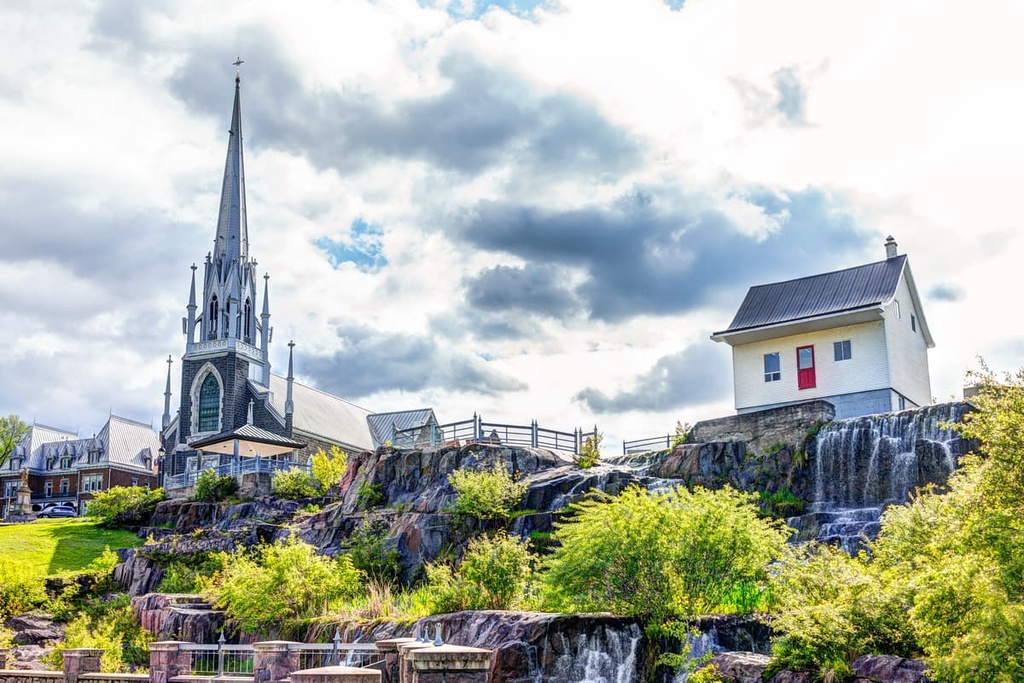
Nestled along the coast of the Saint Lawrence just to the east of the reserve, Baie-Saint-Paul is the commercial and cultural hub of the Charlevoix Regional County Municipality. The city is home to approximately 8,000 residents, which makes it one of the largest in the region.
Baie-Saint-Paul is home to a superb selection of shops, restaurants, and hotels, so it’s a great basecamp for any trip to the reserve. In fact, it’s a wonderful destination in its own right, though the city is perhaps best known for being the home of the first Cirque du Soleil show.
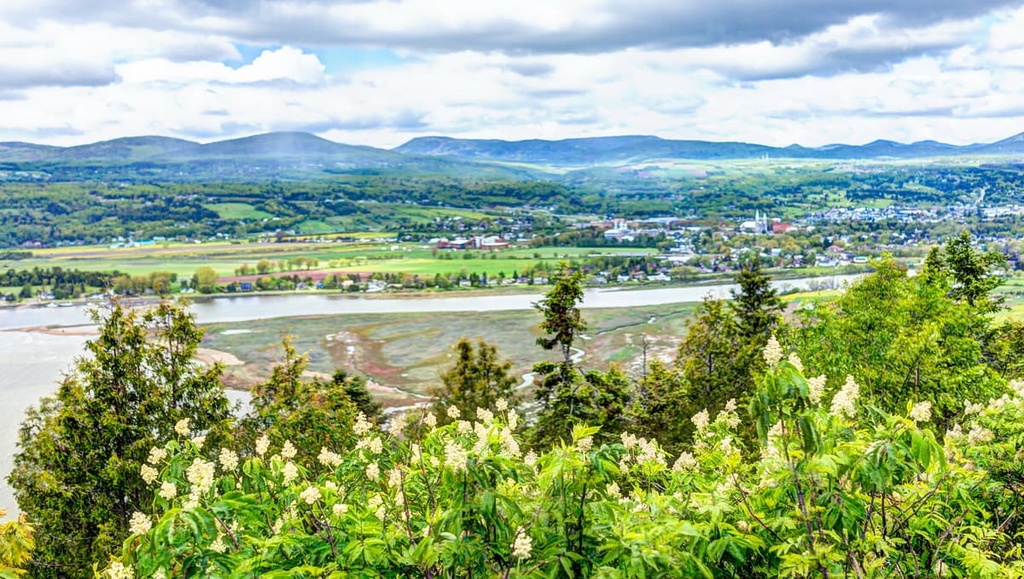
Explore Réserve faunique des Laurentides with the PeakVisor 3D Map and identify its summits.







